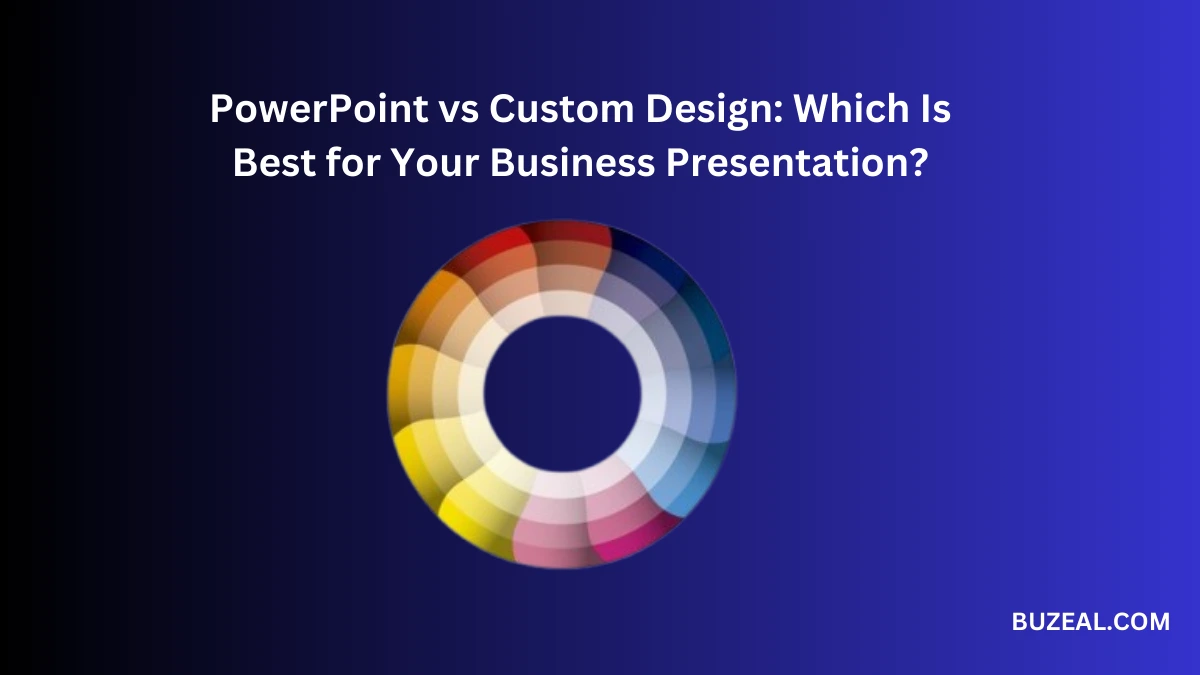
Have you ever wondered why some presentations grab your attention while others feel dull? The secret often lies in color psychology. Colors have a strong impact on human emotions, decision-making, and engagement.
Choosing the right colors for your presentation can help you convey messages effectively, keep your audience focused, and create a memorable experience. Nowadays, many pitch deck designers are using this strategy.
In this blog, we’ll explore how different colors affect people and how you can use them to design good presentations.
Why Colors Matter in Presentation Design
Colors influence how we feel and respond. Studies show that 90% of first impressions are based on color alone.
When used correctly, colors can help in,
- Grabbing attention – Bright colors can make key points stand out.
- Enhancing readability – Proper contrast between text and background improves readability.
- Evoking emotions – Different colors trigger different emotions in people.
- Boosting retention – People remember things better when they are visually appealing.
Let’s look at the psychological impact of different colors and how you can use them effectively.
The Meaning of Colors and How to Use Them
1. Blue: Trust and Professionalism
What does it convey?
Calmness, trust, reliability, intelligence.
Best for Business, corporate, and educational presentations.
How to use it?
- Use light blue for a calming effect.
- Use dark blue for a professional and authoritative feel.
- Pair with white for a clean, easy-to-read design.
2. Red: Energy and Urgency
What does it convey?
Excitement, urgency, passion, importance.
Best for: Sales, marketing, call-to-action slides.
How to use it?
- Use red colour to highlight important points.
- Avoid using too much red, as it can feel aggressive.
- Pair with white or black to balance the intensity.
3. Green: Growth and Harmony
What does it convey?
Nature, balance, growth, health.
Best for: Environmental, health, and finance presentations.
How to use it?
- Use light green for a fresh and natural look.
- Use dark green for stability and trust.
- Combine with white or beige for a balanced appearance.
4. Yellow: Optimism and Attention-Grabbing
What does it conveys?
Happiness, positivity, creativity.
Best for: Motivational, creative, and fun presentations.
How to use it?
- Use yellow to highlight key information.
- Pair with dark colors (black, blue) for better contrast.
- Avoid using too much yellow, as it can strain the eyes.
5. Orange: Warmth and Enthusiasm
What does it convey?
Friendliness, enthusiasm, energy.
Best for: Informal, creative, and branding presentations.
How to use it?
- Use orange for headings or call-to-action buttons.
- Pair with neutral colors like white and gray.
- Avoid using orange for serious or formal topics.
6. Purple: Creativity and Luxury
What does it convey?
Royalty, creativity, wisdom.
Best for: Artistic, luxury, and spiritual presentations.
How to use it?
- Use light purple for a soft, elegant feel.
- Use dark purple for a rich and sophisticated look.
- Pair with white or gold for contrast.
7. Black: Power and Elegance
What does it convey?
Strength, authority, sophistication.
Best for: Corporate, luxury, and high-tech presentations.
How to use it?
- Use black for a sleek, modern design.
- Combine with white or gold for elegance.
- Avoid using too much black, as it can feel heavy.
8. White: Simplicity and Clarity
What does it convey?
Cleanliness, simplicity, purity.
Best for: Minimalistic, medical, and formal presentations.
How to use it?
- Use white as a background for easy readability.
- Combine with bold colors for contrast.
- Avoid too much white space, as it may look empty.
9. Gray: Neutral and Professional
What does it convey?
Balance, formality, sophistication.
Best for: Corporate, professional, and neutral presentations.
How to use it?
- Use light gray for a soft and modern look.
- Use dark gray for a more formal tone.
- Pair with brighter colors to add interest.
Tips for Using Colors Effectively in Presentations
Stick to a Color Palette
- Choose 2-3 primary colors to maintain consistency.
- Use tools like Adobe Color or Canva’s Color Palette Generator to find the right combination.
Ensure Good Contrast
- Dark text on a light background is easier to read.
- Avoid colors that blend together (e.g., red and green).
Use Colors to Highlight Key Points
- Bold colors can be used for important text.
- Avoid making everything colorful – it reduces the impact.
Consider Your Audience
- Professional presentations work best with blue, black, and gray.
- Creative presentations can include yellow, orange, and purple.
Test on Different Screens
- Colors may look different on different devices.
- Preview your slides before presenting.
Conclusion
Colors are powerful tools that can influence how your audience feels and understands your message. Whether you’re designing a business, educational, or marketing presentation, choosing the right color combinations can make a huge difference in engagement and effectiveness.
By using color psychology wisely, you can create presentations that are visually appealing, professional, and impactful. Experiment with different colors and see how they enhance your message!
FAQ – The Psychology of Colors in Presentation Design
Why is color important in presentation design?
Color helps grab attention, improve readability, evoke emotions, and increase audience engagement. It also plays a key role in making presentations memorable.
Which colors are best for professional presentations?
Blue, black, and gray are commonly used in professional settings as they convey trust, sophistication, and authority.
How can I choose the right color combination for my presentation?
Use a color palette with 2-3 primary colors, ensure good contrast for readability, and consider the emotions you want to evoke in your audience.
Are there colors I should avoid in presentations?
Avoid using too many bright colors together, such as neon shades, as they can be overwhelming. Also, be mindful of colorblind-friendly combinations.
How do I make sure my presentation colors look good on different screens?
Test your slides on multiple devices, adjust brightness and contrast, and use high-quality templates to ensure colors appear consistent across screens.
